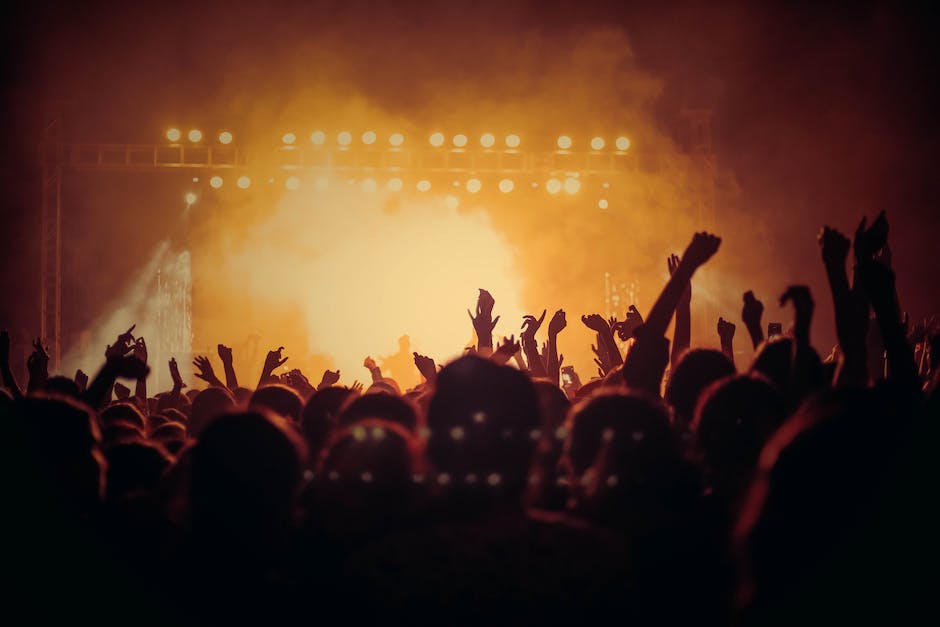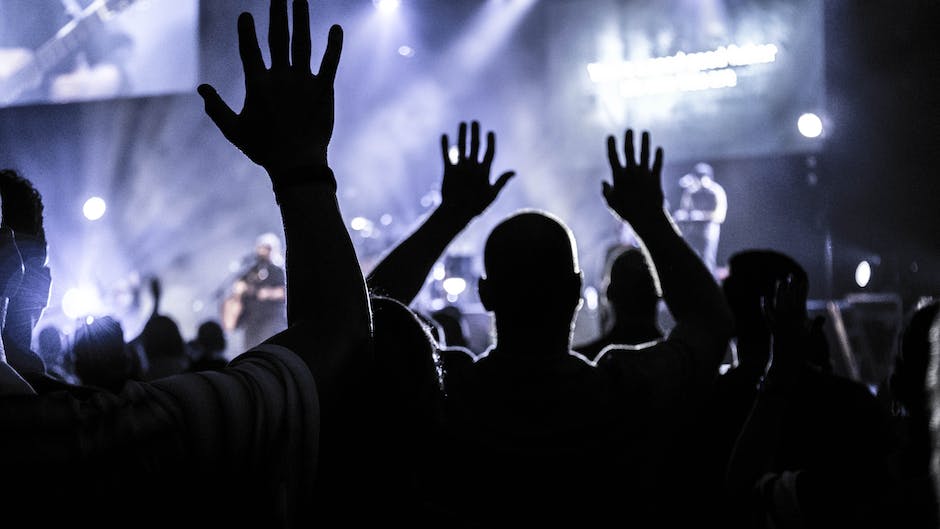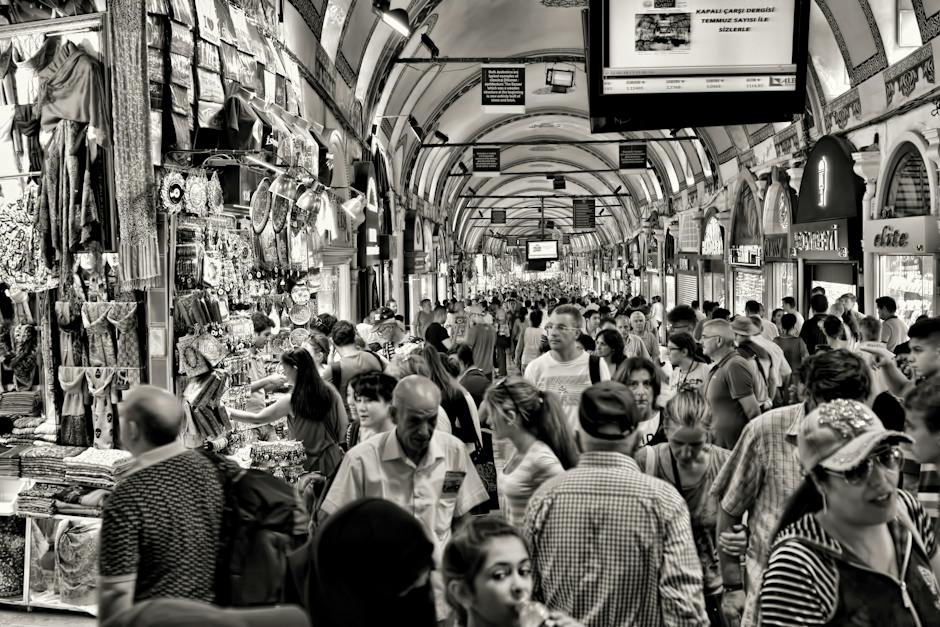Capturing the electric atmosphere of a live concert through a lens can be as exhilarating as the performance itself. In the world of concert photography, the right gear, an eye for composition, impeccable timing, and professional etiquette are as crucial as the musical acts on stage. This exploration into the nuanced art form provides key insights and practical advice for both novice and seasoned photographers looking to freeze those fleeting, yet powerful moments in time. With this guide, we will navigate through the buzzing currents of concert halls and outdoor venues to unveil the secrets that make concert photography a unique and rewarding challenge.
Gear and Settings for Concert Photography
Crafting Memories through Lenses: The Essentials of Concert Photography
When the lights dim and the crowd hushes, every concert is an unfolding story waiting to be captured. Just like an artist utilizes a brush to paint moments, photographers compose these vibrant tales through their cameras, immortalizing the energy and emotion of live performances. The right equipment and settings are not just advantageous—they are crucial in seizing moments that resonate long after the last note has been played.
Camera: Your Artistic Ally
To begin your photographic symphony, you’ll need a camera that can keep pace with the rapid-fire changes of concert scenes. A DSLR or a mirrorless camera, renowned for their speedy autofocus and high-performance in low light, should be your sidekick. High ISO capabilities are a must, as concerts often offer dim lighting, with the occasional burst of brilliance from spotlights. Don’t fret over full-frame or crop sensors; both can achieve breathtaking results. It’s how you use the camera that creates the art!
Lens: The Eye of Creativity
Lungs to the singer, brushes to the painter, the lens is to the photographer. A fast lens with a wide aperture (like f/2.8 or wider) captures more light and creates a shallow depth of field, making your subject pop against a blurred background. Zoom lenses (24-70mm, 70-200mm) provide flexibility, letting you encompass the grandeur of the stage or the intimacy of a guitarist’s fingers sliding across the strings.
Settings: Choreographing the Light
Manual mode gives you control, and in the dynamic world of concert photography, control is power. Crank up that ISO (1600 to 3200, or higher if your camera can handle it without excessive noise). Your aperture should be as wide as possible without sacrificing the sharp edge of your subject—usually between f/2.8 and f/4. As for shutter speed, freeze the action with at least 1/200th of a second, but don’t be afraid to push it faster if the lead singer is on a jumping spree.
White balance can be tricky with the various lighting colors, but auto mode often does the trick. If you find the images too warm or cool, you can always adjust them post-concert with editing software. Remember, capturing in RAW format is like preserving the full palette of your photographic canvas—more room for post-processing creativity.
Additional Players
Don’t overlook accessories that could elevate your concert photography experience. Extra batteries and memory cards are non-negotiables; you don’t want to miss the encore because you ran out of power or space. A monopod can be your stealthy stabilizer amidst a sea of fans, and earplugs—let’s not forget these—protect your hearing while you focus on the visuals.
Remember to respect the performers and fellow spectators. No flash—it’s a no-no. Not only does it dazzle and distract, but it also flattens your masterpiece. Use the stage’s luminance to your advantage; let the light tell the story.
Capturing stunning concert photographs is an exhilarating blend of preparedness and instinct. Every concert is unique, and so are the artful shots it inspires. Indeed, the right gear and settings are foundations, but it is your creative vision and responsiveness to the pulse of the concert that truly create stunning photographs—as vibrant and resonant as the music itself. Keep shooting, keep creating, and let the melody guide your shutter.

Composition and Timing in Concert Photography
Composing the Perfect Moment: The Art of Concert Photography
A brilliant concert photograph transcends mere documentation; it freezes the raw emotion, kinetic energy, and commanding presence of a performer in a fragment of time, that when viewed, reverberates through the beholder. The waltz of composition and precise timing is a dance that elevates concert photography from snapshots to visual anthems.
Picture this: the stage ignites with dynamic lighting, the crowd’s energy is palpable, and every guitar riff shakes the soul. In this electric chaos, composition—a photographer’s strategic arrangement of elements within the frame—lays the groundwork for telling a story. The rule of thirds, leading lines, and framing are more than photographer’s jargon; they are tools that invite viewers into the moment, guiding their gaze to the subject while creating a balance that pleases the eye. A thoughtfully composed shot will give room to the performer’s expressions and movements, embracing the space they occupy and the space they’re about to leap into.
Then comes timing, that split-second decision that can distinguish a stunning photograph from the rest. Great concert photography is about more than just clicking the shutter button. It’s about predicting the artist’s next move, the swell of the chorus, or the dramatic pause before the climax of a song. Timing is often intuitive, born from an understanding of music and the unspoken conversation between the performer and the audience. This synergy taps into the rhythm of the concert, enabling the photographer to anticipate and capture the defining moments of the show.
In the realm of concert photography, even gestures and glances have a rhythm, a visual tempo that resonates through the lens. Positioning in the pit or around the venue can make a substantial difference, seeking angles that breathe life into a shot. This awareness, coupled with a poised finger on the trigger, ensures that rather than simply taking pictures, one is creating art.
It’s essential to remember that while technical proficiency can set the stage for a good photo, the bond between the photographer and the environment infuses it with soul. Each concert is a live canvas, a fluid masterpiece where light, color, motion, and shadows coalesce. Keen observation opens the door to exploit these fleeting alignments, capturing more than just an artist on stage; it captures an experience.
Timing and composition are the yin and yang of concert photography, a fusion that requires patience and practice to master. A strategically captured photo, brimming with life, connects the viewer to that split second where everything aligns perfectly: emotion, motion, timing, composition. This is the crescendo of concert photography.
Embrace the rhythm, seek the story, and align the elements. Be ready to freeze the moments that will resonate, tell a story, and remind the world that music is not just heard, but also seen and felt, through the art of the photograph.

Etiquette and Access for Concert Photographers
Navigating the Stage: Etiquette and Best Practices at Concerts
For the devoted concert photographer, the dance between catching that perfect shot and navigating the pulsating energy of a live show is a delicate one. Every concert is a living, breathing masterpiece, and photographers are the keen-eyed artists poised to immortalize these ephemeral moments. Yet, beyond the thrill and the chase of the perfect frame, there’s an unwritten code—a symphony of etiquette and best practices—that ensures not only sensational photos but also respect for the art and the audience.
To step into the world of concert photography is to enter a realm where respect and professionalism play lead roles. First and foremost, securing proper credentials is crucial. Going through the right channels to gain access ensures that concert photographers are welcome additions to the scene. Typically, this means reaching out to the venue, the event organizers, or the band’s management with a request for a photo pass. It pays to be clear about intent and respectful of the boundaries set by those in charge.
Once in the pit, one must be mindful of the three-song rule, a common practice at concerts where photographers are allowed to shoot during the first three songs of the set only. This limitation demands efficiency and prompts photographers to be at the top of their creative game from the get-go. It’s a burst of intense work, followed by allowing the audience to enjoy the show without distraction.
Speaking of distraction, while submerged in the electric atmosphere of the pit, photographers must be acutely aware of their surroundings. This means moving subtly, avoiding blocking the audience’s view, and never interrupting the performers. A photographer’s movement should be like a silent song—felt but not intrusive.
But what about the shot itself? It’s not enough to merely capture the artist; concert photography is about telling a story—the sweat on a brow, the strum of a guitar, the exultation of the crowd. Aim to encapsulate the emotion and narrative of every performance. This requires a keen eye for detail and an intuition for the moments that matter.
In the quest for the story, there’s also a need to be considerate of fellow photographers. Share the space in the pit—step back after getting a shot to give others a chance. It’s a dance of give and take, and when performed well, it ensures all artists with a lens get their moment to shine.
For those with an unquenchable thirst for vibrant and storytelling images, understanding lighting is also key. Spotlights, strobes, and colored beams create a dynamic environment, and learning to work with these elements rather than against them can lead to stunning photographs. Mastering the exposure triangle—ISO, aperture, and shutter speed—creates harmony between light and shadow.
Last but not least, maintaining the purity of the experience is imperative, which means avoiding drawing undue attention. Silent shooting modes are a godsend for respecting the acoustic integrity of the venue. And for those unforgettable moments that beg to be shared, be sure to credit the artists and the event, thereby weaving a thread of gratitude through the tapestry of the captured narrative.
Photographing concerts is a privilege that carries with it the responsibility to act as custodians of the moment, preserving the raw energy of the live performance for history. By adhering to these etiquettes and practices, concert photographers become the composers of a visual concert, conducting pixels and passion with grace and respect.

Post-Processing Techniques for Concert Images
The Palette of Post-Processing: Refining Concert Photos to Perfection
When the last guitar riff resounds and the cheers of an enraptured crowd fade, concert photographers are left with memories encapsulated in their shots. But the artistic journey doesn’t end there. It’s time to refine those raw, energetic moments into masterpieces through the magic of post-processing.
Photography is indeed a meticulous craft that extends beyond the manual settings of a camera. Here’s how creativity intertwined with technical wizardry can elevate concert photographs from the digital darkroom to the spotlight of online galleries.
Balancing Act: Levels and Curves Adjustments
Concert venues are notorious for their capricious lighting, which can sway from intense spotlights to dim ambience without a warning. Enter Levels and Curves – a dynamic duo that artfully balances brightness, contrast, and tonal range, ensuring that each subject shines without the grungy overtones of a high ISO aftermath.
Color Harmony: Hue/Saturation Tuning
The hues cast by stage lighting can be as diverse as the genres of music performed. With Hue/Saturation adjustments, the colors can be tamed or accentuated to convey the true vibe of the scene. Perhaps the blues need a touch more melancholy, or the reds demand the ferocity of a guitar solo – this is where one sets the emotional tone through the palette of colors.
Sharpness and Clarity: Unveiling Details
In the midst of motion blur and artistic noise, sometimes the finer details need to emerge with clarity. Sharpening tools slice through the haze, bringing out textures and features with precision. Meanwhile, clarity adjustments enhance the midtone contrast, adding depth that makes the artist’s expressions and the crowd’s energy pop.
Noise Reduction: Smoothing the Visual Tempo
High ISOs are a concert photographer’s necessary companion, but they bring along their noisy friend – grain. Noise reduction techniques can smooth out this digital static without muddling the crispness of the photo, striking the right chord between atmospheric grain and distracting noise.
Selective Edits: Spotlights and Vignettes
Every face in the crowd, every strum of the strings tells a part of the story. Selective editing tools, such as brushes or gradient filters, highlight or diffuse specific areas – perhaps to cast a virtual spotlight, or to gently usher the viewer’s gaze towards the emotion-laden leap of a lead vocalist.
Crop and Composition: Reframing the Story
While the initial composition is crucial, the crop tool offers a second chance to frame the story just right. It can cut out a distracting background singer, bring the main act into sharper focus, or transform the photo into a panoramic sweep that carries the viewer through the wave of a thrilled audience.
Black and White Conversion: Timeless Rhythm
Sometimes the essence of a concert is best captured in the timeless contrast of black and white. Stripping away the colors can draw attention to the raw power of a performance, the interplay of light and shadow, and the human emotions laid bare on the stage.
The Final Touch: Sharpen for Output
Before sending the photographs out into the world, one final technical note – always sharpen for the specific output. Whether the images are destined for online sharing or a high-quality print, a touch of sharpening tailored to the medium ensures each detail conveys the story as intended.
While the shutter captures the song, it is in the digital studio that the symphony of light, shadow, and color is fine-tuned. Post-processing isn’t merely about correction – it’s about transformation and infusing the artist’s vision into every pixel of the concert narrative. With these techniques in the tool belt, concert photographs are elevated to visual anthems, waiting to resonate with audiences near and far.

The symbiosis of sound and visual artistry in concert photography is a dance of light, motion and human emotion, intricately captured through the photographer’s eye. Harnessing the energy of live performances and transforming those split-second memories into enduring works of art is no small feat, yet with the right approach and a touch of creativity, the results can be as mesmerizing as the music itself. As the house lights return and the crowd dissipates into the night, the images you’ve captured will serve as vibrant echoes of the rhythmic journey, a concert immortalized, one frame at a time.
